Performance Analysis of Single-Phase Electrical Machine for Military Applications
Abstract
:1. Introduction
2. Constraints of Portable Generator in Military Applications
3. Design Strategy for Portable Generator
3.1. Permanent Magnet Synchronous Reluctance Generator
- The barrier number, size, position and shape are optimized for required output voltage and good saliency ratio.
- The magnets are designed and placed to meet the PM flux linkage required for this application.
3.2. Induction Generator
4. Finite Element Analysis
4.1. Flux Distribution
4.2. Output Voltage Waveforms
4.3. Weight of the Generators
5. Mechanical Analysis
5.1. Transient Thermal Analysis
5.2. Torque Waveform in Generating Mode
5.3. Acoustic Analysis
6. Cost Estimation
7. Conclusions
From the Analysis
- ✓
- Voltage regulation in the G2 rotor was 8.77% less compared to G3.
- ✓
- The magnet weight used in G1 was 72.2% higher than G2.
- ✓
- The overall weight of G2 was 20.7% and 52% less than G3 and G1, respectively.
- ✓
- At rated load, both generators were within the thermal limit for ambient conditions prescribed by the military requirements.
- ✓
- The noise level of G2 and G3 was 64 dB and 66 dB, respectively, which is within the range of military standards.
Author Contributions
Funding
Acknowledgments
Conflicts of Interest
Appendix A
| Magnet | Characteristic | Unit | Value |
|---|---|---|---|
| Ferrite | Residual induction Br at 20C | Tesla | 0.42 |
| Energy Product at 20C | kJ/m3 | 32.9 | |
| Mass density | kg/m3 | 4900 | |
| Max. Working Temperature | °C | 300 | |
| Curie Temperature | °C | 450 | |
| NdFeB | Characteristic | Unit | Value |
| Residual induction Br at 20C | Tesla | 1.39 | |
| Energy Product at 20C | kJ/m3 | 367.4 | |
| Mass density | kg/m3 | 7500 | |
| Max. Working Temperature | °C | 230 | |
| Curie Temperature | °C | 310 |
| Material | Density (Kg/m3) | Specific Heat (J/KgC) | Thermal Conductivity (W/mC) |
|---|---|---|---|
| M36-29 Gauge | 7700 | 490 | 25 |
| Copper | 8954 | 383.1 | 386 |
| Nomex 410 | 1400 | 1300 | 0.14 |
| Cast Iron | 7272 | 486 | 36.3 |
| N52 (NdFeB) | 7500 | 460 | 7.6 |
Appendix B
References
- Atlascopco. Available online: https://www.atlascopco.com/content/dam/atlas-copco/construction-technique/portable energy/documents/2_generators/spain/portable-generators/portable-generators-leaflet-english.pdf (accessed on 13 September 2018).
- Championpowerequipment. 2017. Available online: https://y79961nbs4u2hvbnwronx9zx-wpengine.netdna-ssl.com/wp-content/uploads/2017/09/100490-om-english.pdf (accessed on 9 August 2018).
- Misron, N.; Rizuan, S.; Vaithilingam, A.; Mailah, N.F.; Tsuyoshi, H.; Hiroaki, Y.; Yoshihito, S. Performance Improvement of a Portable Electric Generator Using an Optimized Bio-Fuel Ratio in a Single Cylinder Two-Stroke Engine. Energies 2011, 4, 1937–1949. [Google Scholar] [CrossRef]
- Matthew, K.S. Electromagnetic Generators for Portable Power Applications. Ph.D. Thesis, University of California, Berkeley, CA, USA, 2005. [Google Scholar]
- Home Generators Basics. 2008. Available online: https://www.smps.us/home-generators.html (accessed on 13 September 2018).
- Norhisam, M.; Syafiq, M.; Aris, I.; Abdul Razak, J. Design and analysis of a single phase slot-less permanent magnet generator. In Proceedings of the International Conference on Power and Energy, Johor Baharu, Malaysia, 1–3 December 2008; pp. 1082–1085. [Google Scholar]
- Stegen, K.S. Heavy rare earths, permanent magnets, and renewable energies: An imminent crisis. Energy Policy 2015, 79, 1–8. [Google Scholar] [CrossRef]
- Alkane Resources Ltd. Available online: http://www.alkane.com.au/products/rare-earths-overview/ (accessed on 13 March 2018).
- Constantinides, S. The Demand for Rare Earth Materials in Permanent Magnets. In Proceedings of the 51st annual Conference on Metullurgists, Niagara Falls, NY, USA, 30 September–3 October 2012; pp. 1–58. [Google Scholar]
- Guyonnet, D.; Lefebvre, G.; Menad, N. Guyonnet et al. Rare Earth Elements and High Tech Products. Available online: https://www.cec4europe.eu/wp-content/uploads/2018/09/Chapter_3_3_Guyonnet_et_al_Rare_earth_elements_and_high_tech_products.pdf (accessed on 3 January 2019).
- Roshanfekr, P.; Lundmark, S.; Thiringer, T.; Alatalo, M. A synchronous reluctance generator for a Wind Application-compared with an interior mounted permanent magnet synchronous generator. In Proceedings of the International Conference on Power Electronics, Machines and Drives (PEMD), Manchester, UK, 8–10 April 2014; pp. 1–5. [Google Scholar]
- Hsiao, C.-Y.; Yeh, S.-N.; Hwang, J.-C. Design of high performance permanent-magnet synchronous wind generators. Energies 2014, 7, 7105–7124. [Google Scholar] [CrossRef]
- Vartanian, R.; Deshpande, Y.; Toliyat, H.A. Performance analysis of a rare earth magnet based NEMA frame Permanent Magnet assisted Synchronous Reluctance Machine with different magnet type and quantity. In Proceedings of the International Conference on Electric Machines & Drives (IEMDC), Chicago, IL, USA, 12–15 May 2013; pp. 476–483. [Google Scholar]
- Tefera, K.; Tripathy, P.; Adda, R. Electromagnetic and mechanical stress analysis of wind-driven synchronous reluctance generator. CES Trans. Electr. Mach. Syst. 2019, 3, 107–114. [Google Scholar] [CrossRef]
- Alnajjar, M.; Gerling, D. Medium-speed synchronous reluctance generator as efficient, reliable and low-cost solution for power generation in modern wind turbines. In Proceedings of the International Symposium on Power Electronics, Electrical Drives, Automation and Motion, Amalfi, Italy, 20–22 June 2018; pp. 1233–1238. [Google Scholar]
- Yamada, A.; Miki, I. Novel Rotor Structure of Permanent Magnet Synchronous Motor with Rare Earth and Ferrite Magnets. In Proceedings of the International Symposium on Power Electronics, Electrical Drives, Automation and Motion, Ischia, Italy, 18–20 June 2014; pp. 1–5. [Google Scholar]
- Selmi, M.; Rehaoulia, H. A simple method for the steady state performances of self-excited induction generators. In Proceedings of the International Conference on Electrical Engineering and Software Applications, Hammamet, Tunisia, 21–23 March 2013; pp. 1–4. [Google Scholar]
- Chan, T.F. Analysis of a single-phase self-excited induction generator. Electr. Mach. Power Syst. 1995, 23, 149–162. [Google Scholar] [CrossRef]
- Reza, R.M. Synchronous Reluctance Machine (SynRM) Design. Master’s Thesis, Royal Institute of Technology Stockholm, Stockholm, Sweden, 2007. [Google Scholar]
- Ashkezari, J.D.; Khajeroshanaee, H.; Niasati, M. Optimum design and operation analysis of permanent magnet-assisted synchronous reluctance motor. Turk. J. Electr. Eng. Comput. Sci. 2017, 7, 7105–7124. [Google Scholar]
- Boroujeni, S.T.; Haghparast, M.; Bianchi, N. Optimization of flux barriers of line-start synchronous reluctance motors for transient- and steady-state operation. Electr. Power Compon. Syst. 2015, 43, 3–17. [Google Scholar] [CrossRef]
- Massimo, B.; Nicola, B. Interior PM machines using ferrite to replace rare-earth surface PM machines. IEE Proc. Electr. Power Appl. 2014, 50, 979–984. [Google Scholar]
- Pavan, A.; Sathyanarayanan, N.; Rajeshkumar, R.; Lenin, N.C.; Sivakumar, R. Thermal analysis of a 3 phase, 550 w switched reluctance machine. Int. J. Appl. Eng. Res. 2015, 10, 86–90. [Google Scholar]
- Staton, D.A.; Cavagnino, A. Convection heat transfer and flow calculations suitable for electric machines thermal models. IEEE Trans. Ind. Electron. 2008, 55, 3509–3516. [Google Scholar] [CrossRef]
- Tong, W. Mechanical Design of Electric Motors; CRC Press: London, UK, 2014; p. 481. [Google Scholar]
- Timar, P.L. Noise and Vibration of Electrical Machines; Elsevier Science Ltd.: Amsterdam, The Netherlands, 1989; p. 355. [Google Scholar]


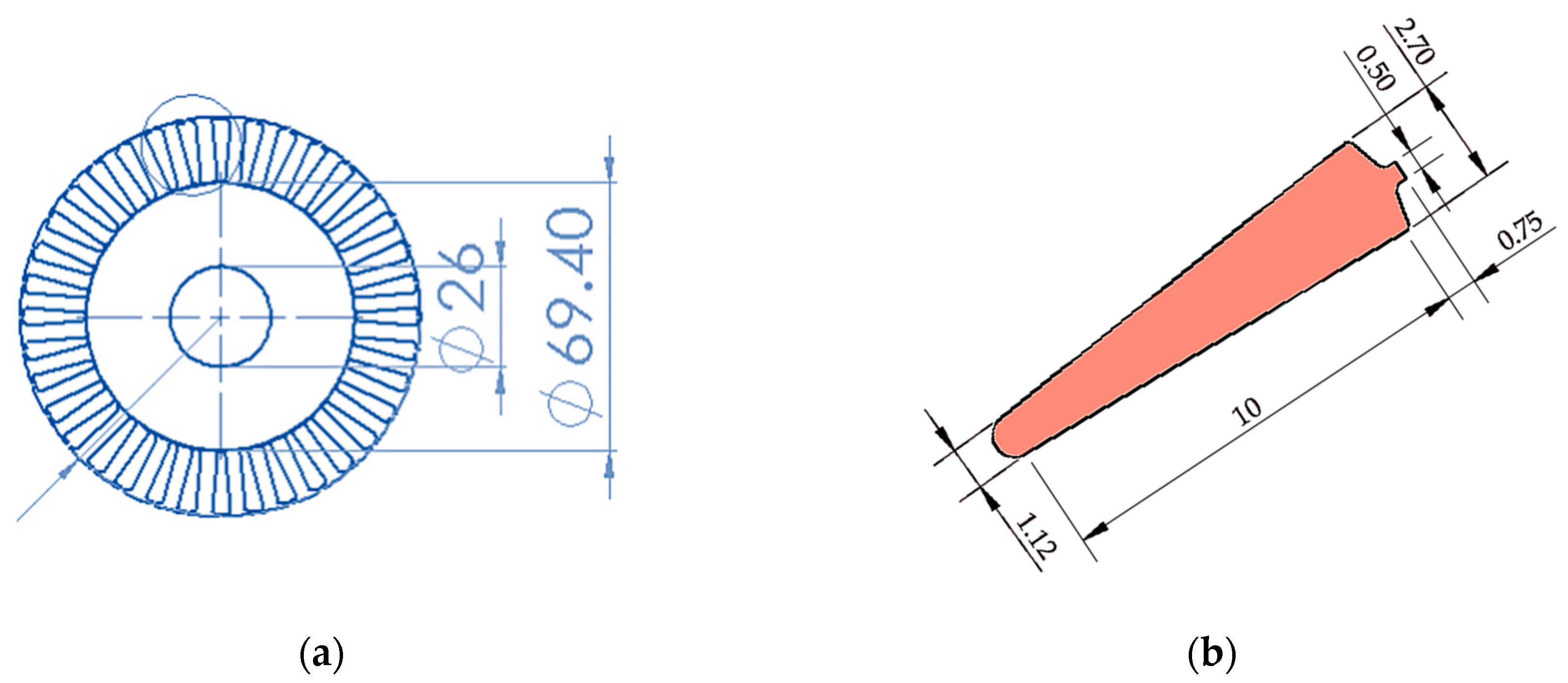
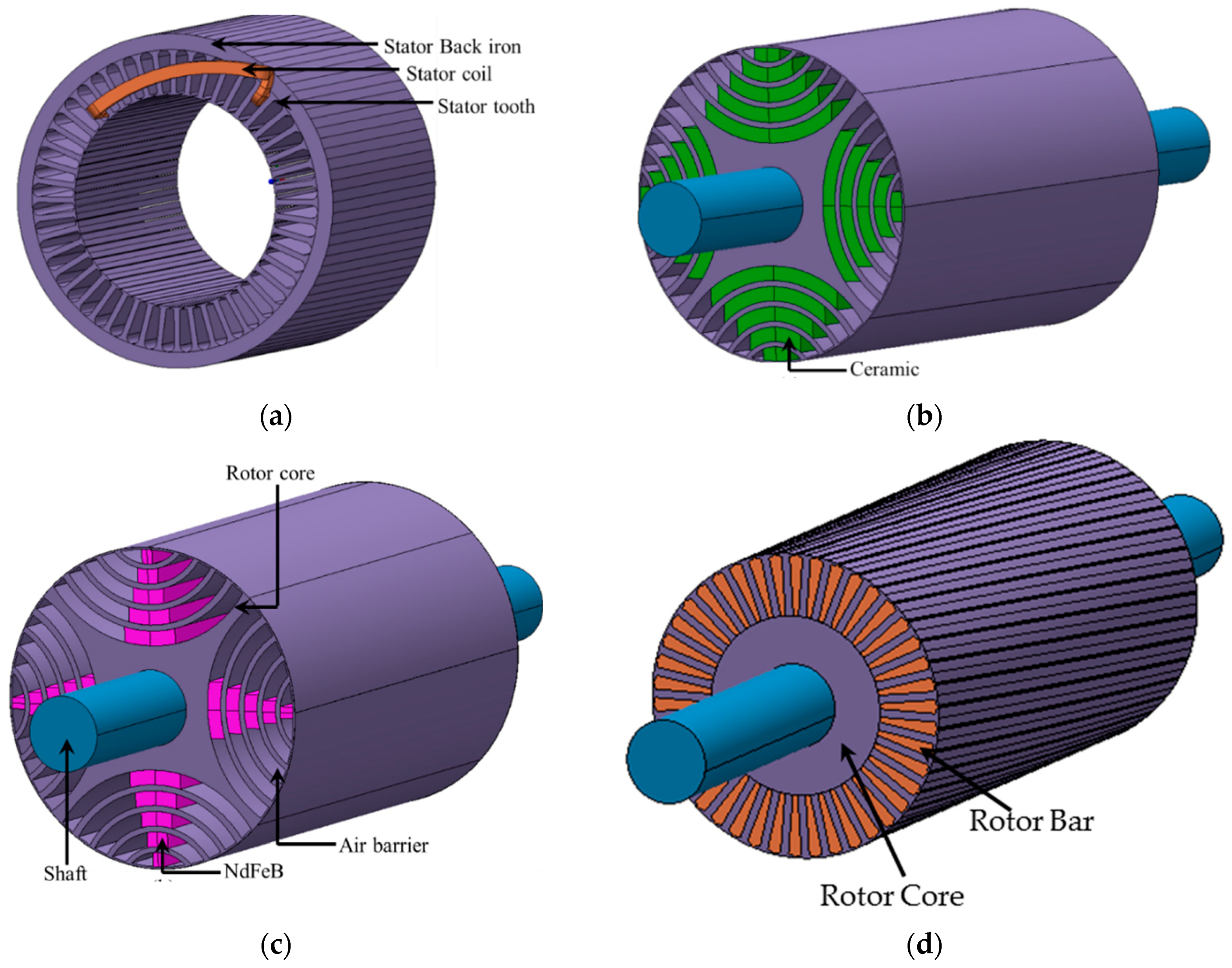


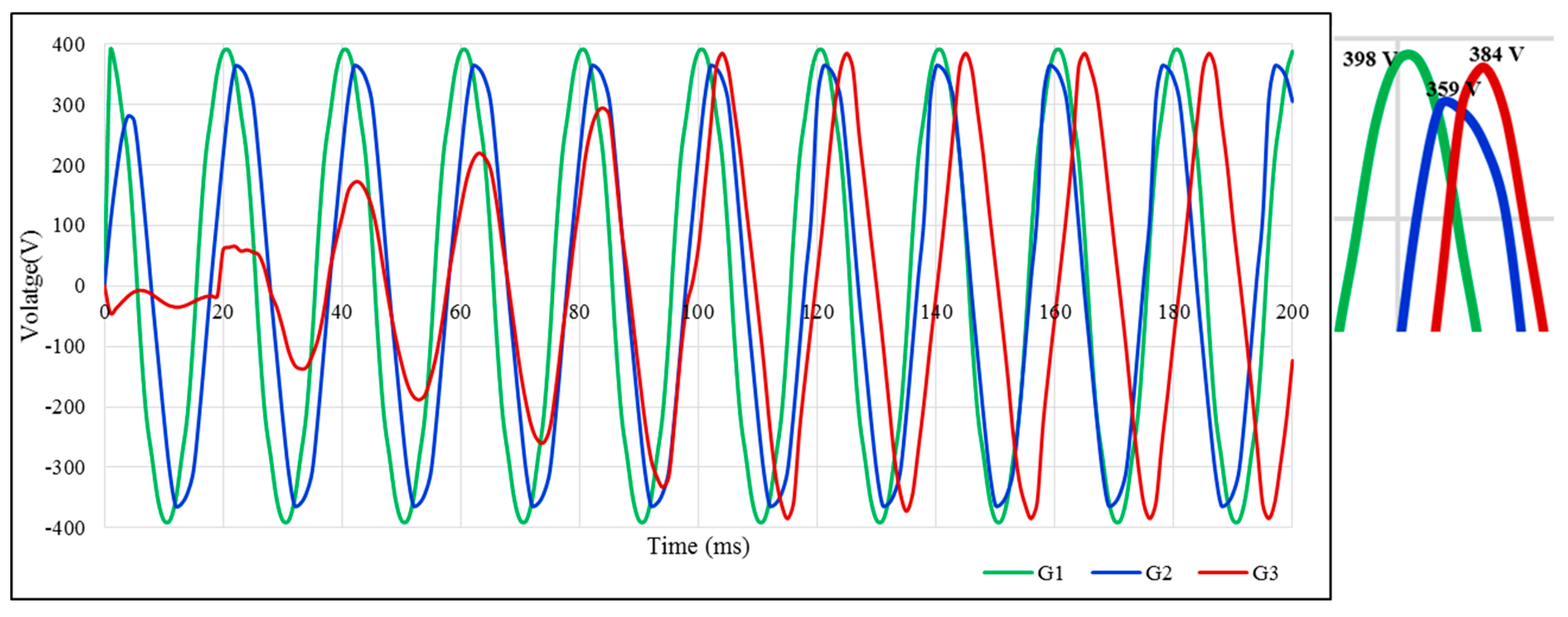


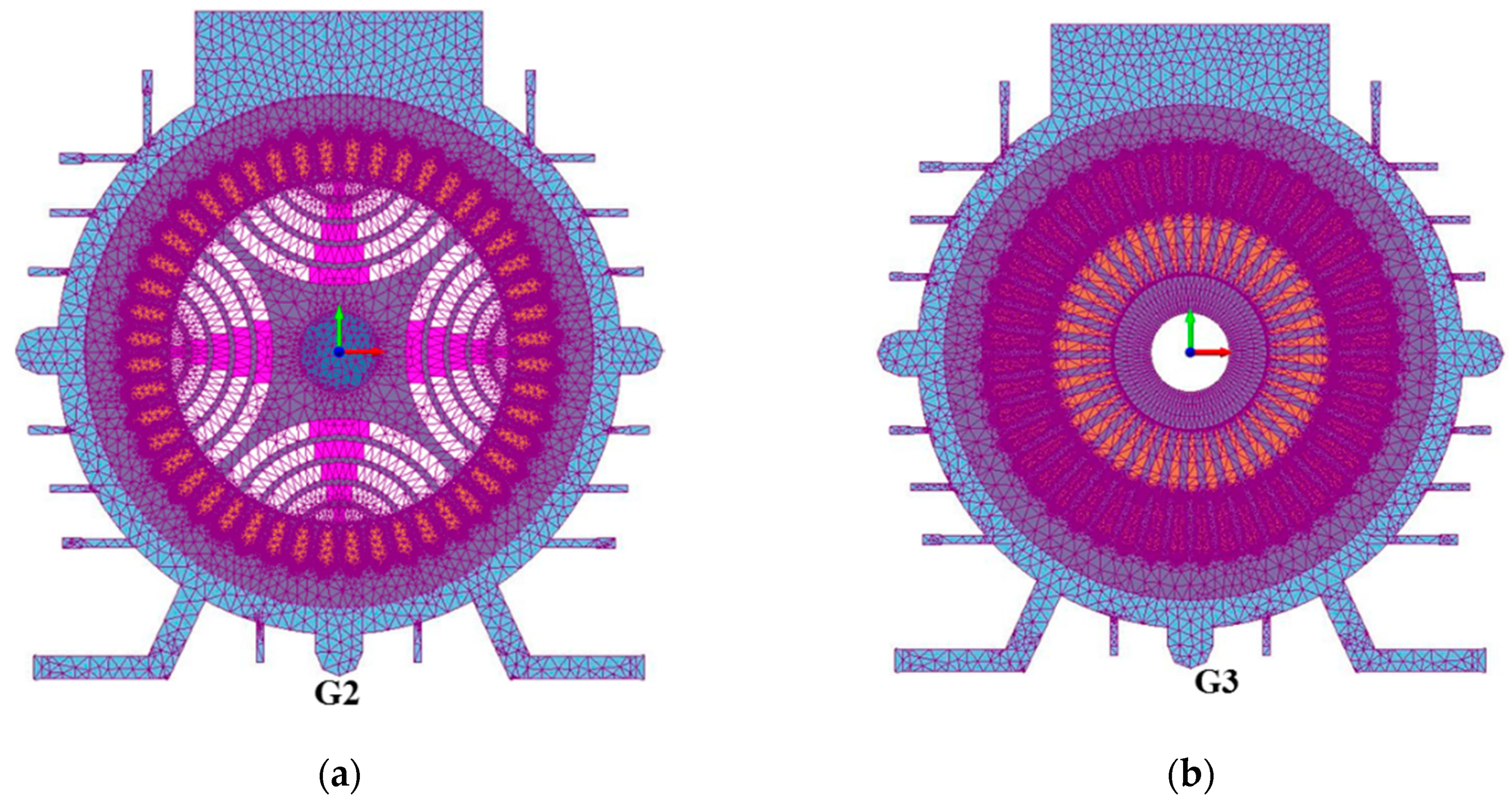

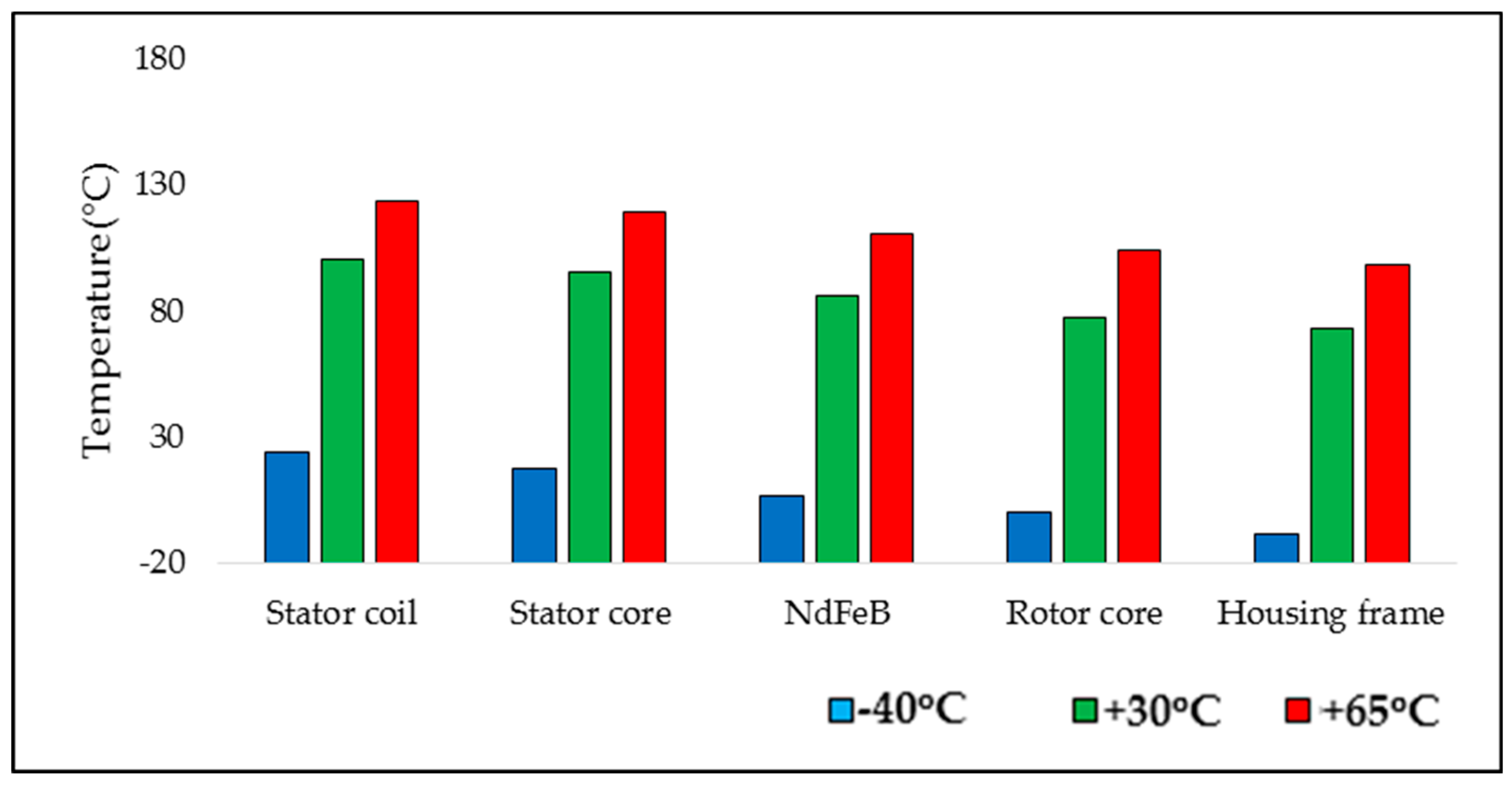
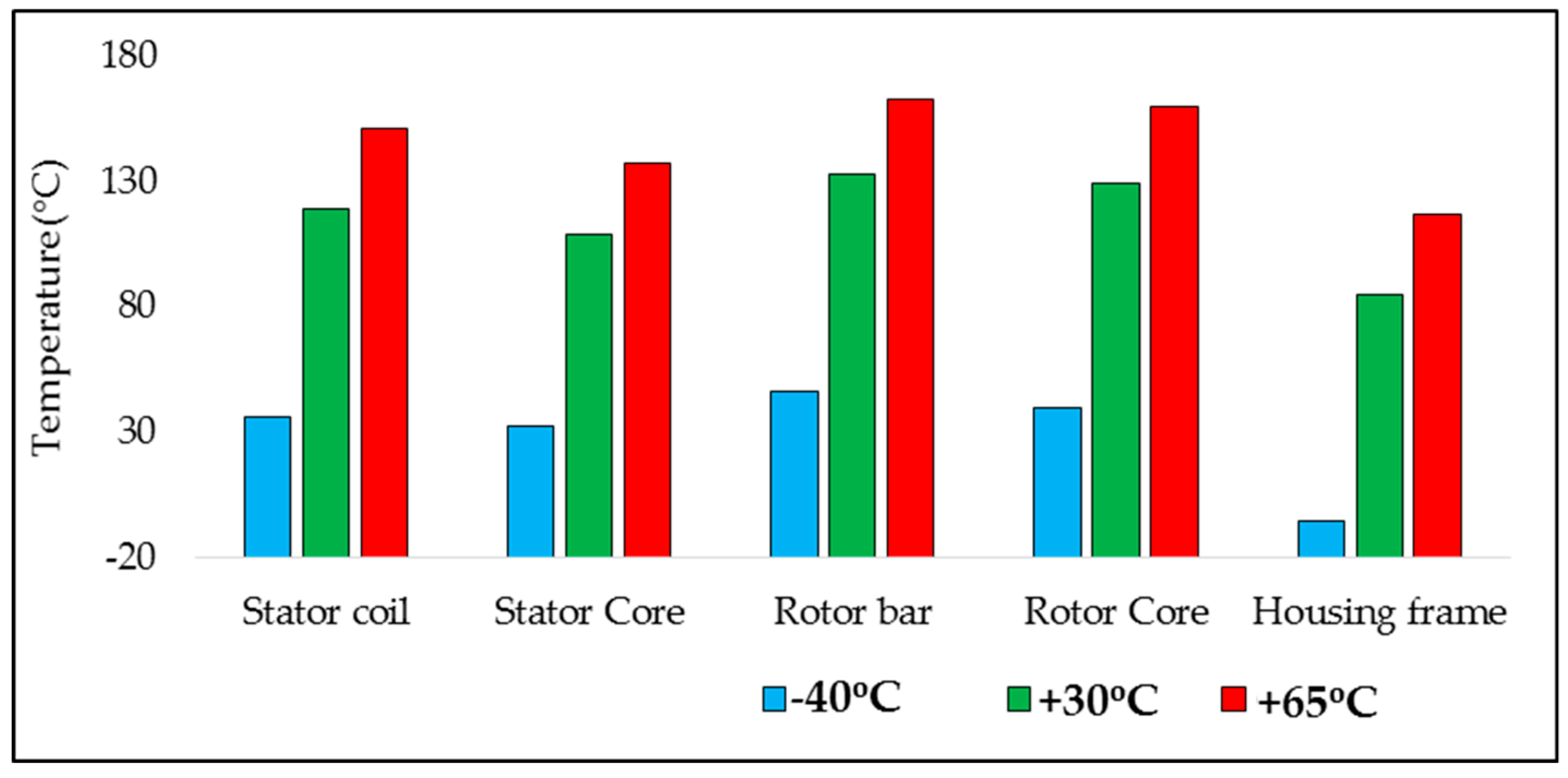



| Characteristic | Value |
|---|---|
| 5 kW | |
| Weight, (dry) | 750 lbs. (340.2 Kg) |
| Weight, wet, 80% fueled | 796 lbs. (361.1 Kg) |
| Noise | 68 dBA |
| Dimensions | 45 × 32 × 36 in (1.143 × 0.813 × 0.914 m) |
| Thermal ambient conditions | −42 °C to + 65 °C |
| Parameters | Unit | Value | ||
|---|---|---|---|---|
| Output power | kW | 5 | ||
| Speed | rpm | 1500 | ||
| Voltage | V | 230 | ||
| Frequency | Hz | 50 | ||
| No. of phase | - | 1 | ||
| No of poles | - | 4 | ||
| Outer stator diameter | mm | 125 | ||
| Inner stator diameter | - | 85 | ||
| Magnet thickness | mm | 5 | ||
| Load resistance | Ω | 10.6 | ||
| Stack length | mm | G1 | G2 | G3 |
| 118 | 75 | 91 | ||
| Dimensionless Number | Equation | Nomenclature |
|---|---|---|
| Reynold’s number | D—Diameter of the stator up to the stator pole arc (m) —Angular velocity = 2 ∏ N/60 (rad/s) N—Speed of the motor (rpm) —Kinematic viscosity (m2/s) β—Coefficient of cubical expansion of fluid (K−1) g—Gravitational force of attraction (m/s2) θ—Temperature difference between surface and fluid (K) —Fluid density (kg/m3) L—Characteristic length of the surface (m) µ—Fluid dynamic viscosity (Kg/m s) c—Specific heat capacity of fluid (J/Kg K) λ—Thermal conductivity of fluid (W/m K) | |
| Grashof number | ||
| Prandtl number | ||
| Nusselt Number |
| Components | Heat Loss | |
|---|---|---|
| G2 | G3 | |
| Copper loss | 491 | 833 |
| Core loss | 35 | 33 |
| Parameter | G1 | G2 | G3 | Remarks |
|---|---|---|---|---|
| No load induced EMF (V) | 281 | 253.8 | 263 |
|
| Full load voltage (V) | 229.1 | 230.5 | 228.7 | |
| Full load current (A) | 21.9 | 22.2 | 22.17 | |
| Output power (kW) | 5.02 | 5.12 | 5.07 | |
| Total losses (W) | 941 | 613 | 995 | |
| %Efficiency | 84.2 | 89.3 | 83.6 | |
| %Voltage regulation | 22.65 | 10.13 | 18.9 | |
| kW/kg | 0.233 | 0.496 | 0.389 | |
| Maximum winding temperature (°C) | -NE- | 100 °C | 132 °C | |
| Noise level (dB) | -NE- | 64 | 66 |
| S. No | Material | Grade | Price/kg (approx.) | Part Number | Quantity (kg) | Cost (INR) (max.) | ||
|---|---|---|---|---|---|---|---|---|
| G2 | G3 | G2 | G3 | |||||
| 1 | Non-Oriented AISI Silicon Steel | M-36 29 Ga | 80 to 130 | - | 7 | 10 | 910 | 1300 |
| 2 | NdFeB | N52 | 10000 to 12000 | - | 1.5 | nil | 18000 | -NA- |
| 3 | Copper coil | AWG-15 | 500 to 620 | - | nil | 3 | -NA- | 1860 |
| AWG-16 | 500 to 620 | - | 2.5 | -NA- | 1550 | -NA- | ||
| 4 | Copper bar | - | 500 to 550 | - | nil | 2.5 | -NA- | 1375 |
| 5 | Capacitor | 200 uF/440 V | 5600 to 7460 | 871-B32361B2207J50 | nil | 2 (count) | -NA- | 14920 |
| 6 | Nomex Insulation | Class F | 750 to 1500 | - | 2 | nil | 3000 | -NA- |
| Class H | 2500 to 4000 | - | nil | 2 | -NA- | 8000 | ||
| 7 | Grey cast iron | Grade 350 | 50 to 80 | -Pleae | 8 | 10 | 640 | 800 |
| 8 | Journal bearing | Bearing Steel | 100 to 160 | 6004 6004 ZZ | 2 (count) | 2 (count) | 320 | 320 |
| 9 | Fasteners SS 304 | IS 1363/DIN 933/BS 1083 | 25 to 30 | M12x20 | 8 (count) | 8 (count) | 240 | 240 |
| 10 | Fasteners SS 304 | IS 1363/DIN 933/BS 1083 | 55 to 65 | M16x30 | 4 (count) | 4 (count) | 260 | 260 |
| 11 | Fabrication | - | - | - | nil | nil | 40000 | 30000 |
| - | - | - | - | Total (Approx.) | 22.5 | 29 | 64920 (926 USD) | 59075 (842 USD) |
© 2019 by the authors. Licensee MDPI, Basel, Switzerland. This article is an open access article distributed under the terms and conditions of the Creative Commons Attribution (CC BY) license (http://creativecommons.org/licenses/by/4.0/).
Share and Cite
Ganesan, A.U.; Nandhagopal, S.; Venkat, A.S.; Padmanaban, S.; Pedersen, J.K.; Chokkalingam, L.N.; Leonowicz, Z. Performance Analysis of Single-Phase Electrical Machine for Military Applications. Energies 2019, 12, 2285. https://doi.org/10.3390/en12122285
Ganesan AU, Nandhagopal S, Venkat AS, Padmanaban S, Pedersen JK, Chokkalingam LN, Leonowicz Z. Performance Analysis of Single-Phase Electrical Machine for Military Applications. Energies. 2019; 12(12):2285. https://doi.org/10.3390/en12122285
Chicago/Turabian StyleGanesan, Aswin Uvaraj, Sathyanarayanan Nandhagopal, Arvind Shiyam Venkat, Sanjeevikumar Padmanaban, John K. Pedersen, Lenin Natesan Chokkalingam, and Zbigniew Leonowicz. 2019. "Performance Analysis of Single-Phase Electrical Machine for Military Applications" Energies 12, no. 12: 2285. https://doi.org/10.3390/en12122285







